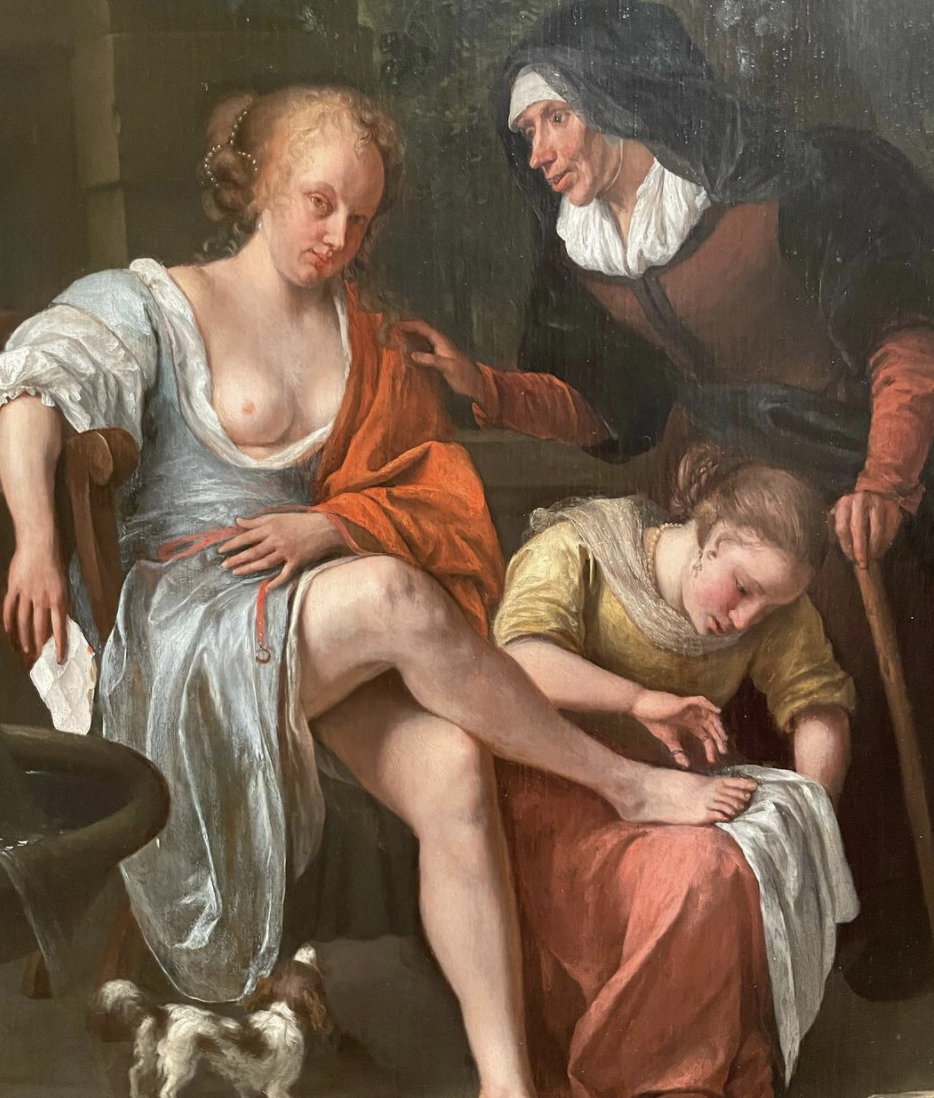Jan Steen, a Dutch Golden Age painter and contemporary of Rembrandt was apparently known for his sense of humor as well as his technique and mastery of color, on full display here in this painting from the Getty of Bathsheba after the Bath, from around 1665, or as I call it, Bathsheba getting a pedicure before her big night with King David.
Curators tell us that the scene comes from the biblical story of David summoning Bathsheba. As in yesterday's image from Rembrandt, an alluring woman is selected by the powerful ruler to do his sexual bidding. In this case, Steen opted to show Bathsheba as a willing temptress rather than an innocent victim as she was normally depicted, again aligning with Rembrandt's version of the Europa tale. She has come hither eyes and her dress is already falling off her. Is her maidservant trying one last time to tell her that this is a bad idea?
I'm not sure whether this was considered 'funny' in the Dutch Golden Age. Steen had married the boss's daughter Margriet (he was assistant to the painter Jan van Goyen) and they had eight children. It was during this time, his most productive also artistically, that he painted this work.
Rembrandt Interprets Europa's Abduction
I went up to the Getty in part to catch up with their new Artemesia (the yin, woman with dagger to kill herself after being raped) and anticipate their new Labille-Guiard (the yang, woman with nursing babe) and took a detour through the very busy Gods of Painting galleries where I don't often have time to linger.
I had forgotten how many Old Master paintings deal with the subjects of rape, violation, abduction, lust and subjugation of seemingly compliant women from antique and biblical times.
The detail from this Rembrandt of 1632, The Abduction of Europa tells of the story of Jupiter being captivated by Europa and transforming himself into a bull to seduce her (huh?). Europa falls for it: she climbs on his back and "is spirited across the sea to the continent that would bear her name." The curators say that this distressing subject was considered suitable for a 'city house' in Amsterdam presumably to mirror the interests of the patron. Here, an attendant’s reaction to the unfolding events is more in keeping with my own take.
The Artemesia is tucked away for some reason in a sculpture gallery and was not surrounded by anyone while I was there. More tomorrow on Lucretia, Bathsheba and Europa and the depiction of powerful men confronted by desirable women in the early part of the 17th century.

